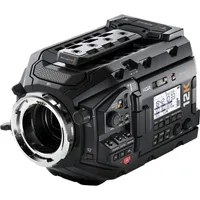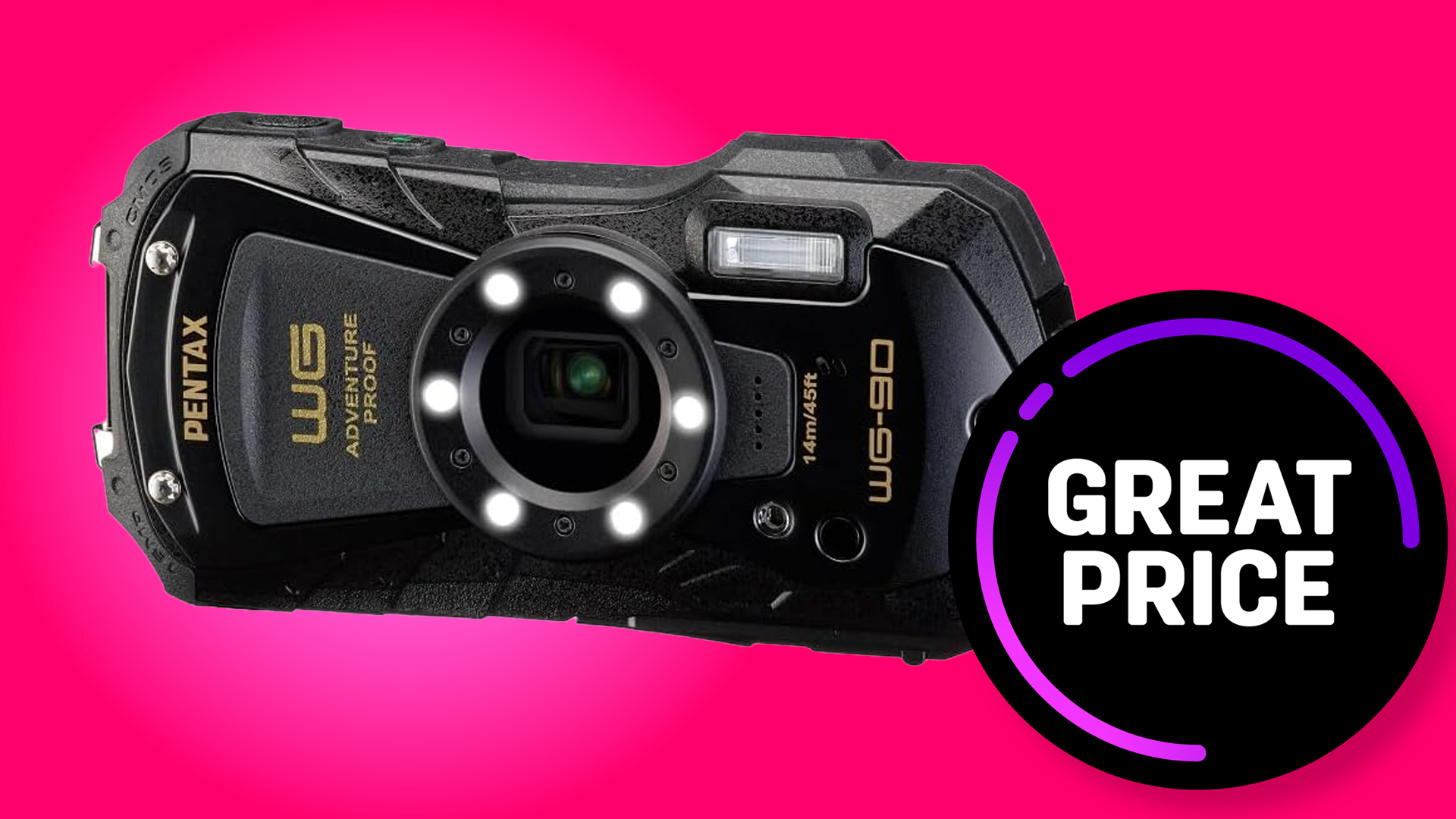Blackmagic 12K or 4.6K cinema camera for $5,995? I know which I'd go for!
A 12K or 4.6K cinema camera for the same price? Blackmagic is now giving you the option, so choose wisely

Let's start this off and say that $5,995 is a lot of money to invest in a camera purchase, but think of this investment at a long-term one. Yes, you're putting a lot of money down, but this is going to make you money, set up your film company or take your cinematography to the next level.
So the $5,995 question is, do you go for the Blackmagic Ursa Mini Pro 12K or its 4.6K G2 little brother? I know which I'd pick, do you?
Blackmagic Ursa Mini Pro 12K | $5,995
Get ready for video recording at a whopping future-proofing 12K with the URSA Mini Pro 12K. This pro cinema camera uses a 12,288 x 6480 12K Super35 sensor, new color science, and up to 14 stops of dynamic range to produce extraordinarily detailed images that your clients will love, all in a relatively compact package.
US DEAL
So let's get straight into it, for the same price I would personally go for the 12K Ursa Mini Pro and forget about the Blackmagic Ursa Mini Pro 4.6K G2. The 12K offers the best image resolution on the market right now, with a super35 80 megapixel sensor able to produce an image of 12,288 x 6,480 compared to the mere 4,608 x 2,592 from the 4.6K G2.
Read more: The best 4K camera for filmmaking
Let's not forget that with the 12K you can also oversample your footage to produce outstanding 8K or even 4K projects thank to its in-sensor scaling, allowing you to shoot RAW in 8K or 4K while using the full sensor. Better still – you can shoot slow motion RAW at 120 fps in 8K or 240fps 4K if in super16 format. That alone is a reason to buy one in my book.
Blackmagic Ursa Mini Pro 4.6K G2| $5,995
Upping the electronics and recording capabilities of its Mini Pro predecessor, this pro-grade cinema camera brings an expanded control set and even more functionality. The G2 introduces an updated Super 35 4.6K sensor featuring 15 stops of dynamic range at 3200 ISO, a high frame rate recording of up to 300 fps, and additional recording functionality, making this a great choice to produce professional films.
US DEAL
Now I know what you're all thinking... nothing can be viewed in 12K, and 4K monitors are still pricey, TVs less so. 8K is still far far away in becoming a normal consumable, so why would I choose the 12K over the vastly more sensible 4.6K G2 that can certainly work better in current workflows for yourself, your clients, studios, computing power etc, etc. Two words. Future-proofing.
We are all told in many marketing materials from any camera manufacturers that shooting above 4K helps us future-proof our work, and that shooting in 8K allows better frame cropping for your final 4K production. These are all very worthy reasons, but I think we are missing the point.
The best camera deals, reviews, product advice, and unmissable photography news, direct to your inbox!
Future-proofing doesn't just mean your work is good to go when 8K or 12K eventually become a mainstream product in the homes of millions of people, it's also about being a the forefront of technology, knowing where technology is going, how to develop a workflow around such a vast system, and of course, the camera will always be relevant, until 12K becomes the new 4K at least.
My reasons for picking the 12K are purely for the benefits of understanding the technology, and offering the best out there. But if you understand how to manipulate 12K and how to make it work for you in the best way possible, you're not just a cinematographer offering to shoot projects in stunning 12K, you're an asset to a film production agency, a Hollywood set. Anyone can press a record button and shoot 12K, but if you fully understand it, how to manage it and file it, that becomes invaluable to the industry as it slowly progresses from 4K to 8K and eventually 12K.
Yes, you will need to buy bigger and better SSD drives to store the 12K footage, you will even have to deal with bugs and workarounds when editing and transporting footage, but that is the cost at living on the blistering edge of technology. But, I think this is all a small price to pay when your camera and your knowledge of shooting, editing, transcoding and transporting 12K will become even more valuable as the industry evolves.
The Blackmagic Ursa Mini Pro 4.6K G2 is a phenomenal camera and I have seen cinematographers produce outstanding and moving work in 4K. Remember, these two cameras are basically the same, they share the same body, external connections and internals to a certain extent, but one has a 12K sensor and the other is 4.6K, both are the same price, a price I am willing to pay for 12K. 4.6K? Not anymore.
Read more:
Best Netflix approved cameras
Best cine lenses
Best cinema cameras
Best audio recorders for filmmakers

For nearly two decades Sebastian's work has been published internationally. Originally specializing in Equestrianism, his visuals have been used by the leading names in the equestrian industry such as The Fédération Equestre Internationale (FEI), The Jockey Club, Horse & Hound, and many more for various advertising campaigns, books, and pre/post-event highlights.
He is a Fellow of the Royal Society of Arts, holds a Foundation Degree in Equitation Science, and holds a Master of Arts in Publishing. He is a member of Nikon NPS and has been a Nikon user since his film days using a Nikon F5. He saw the digital transition with Nikon's D series cameras and is still, to this day, the youngest member to be elected into BEWA, the British Equestrian Writers' Association.
He is familiar with and shows great interest in 35mm, medium, and large-format photography, using products by Leica, Phase One, Hasselblad, Alpa, and Sinar. Sebastian has also used many cinema cameras from Sony, RED, ARRI, and everything in between. He now spends his spare time using his trusted Leica M-E or Leica M2, shooting Street/Documentary photography as he sees it, usually in Black and White.


